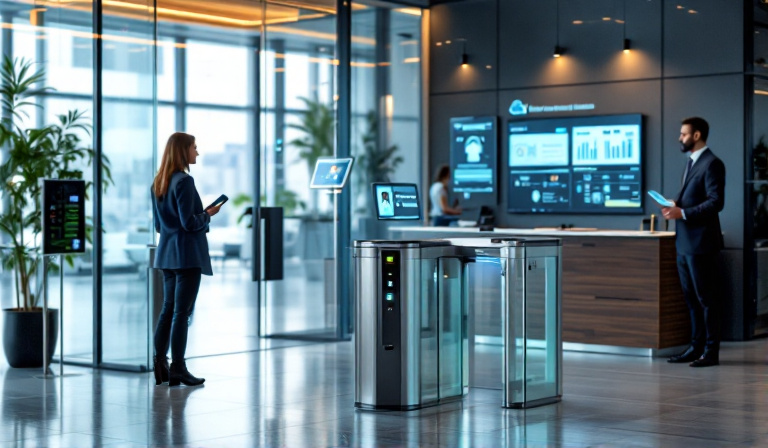
In today's world, ensuring the security and convenience of our personal and professional spaces is more critical than ever. Whether it's your home, office, or any other environment, access control plays a pivotal role in maintaining safety and efficiency. But what exactly is access control, and how can it help us achieve these goals?
Understanding Access Control
Access control refers to the selective restriction of access to a place or resource. It is a fundamental component of modern security strategies, designed to protect people and property from unauthorized access while ensuring that authorized individuals can gain entry easily and efficiently.
The Benefits of Access Control
Implementing a robust access control system offers numerous advantages:
- Enhanced Security: By restricting entry to authorized individuals only, access control systems help prevent unauthorized access, thereby reducing the risk of theft, vandalism, and other security breaches.
- Convenience and Flexibility: Modern access control solutions offer various forms of authentication, such as key cards, biometric scans, and mobile access, making it easier for users to enter secure areas without compromising security.
- Audit Trails: Access control systems can generate detailed logs of entry and exit times, providing valuable data for security audits and investigations.
- Scalability: These systems can be easily scaled to accommodate growing needs, making them suitable for both small and large organizations.
- Remote Management: Many access control systems offer remote management capabilities, allowing administrators to monitor and control access from anywhere with an internet connection.
Types of Access Control Systems
There are several types of access control systems available, each with its unique features and applications:
- Discretionary Access Control (DAC): DAC allows the owner of the protected area to set policies defining who can access certain resources. While flexible, it can be less secure if not managed properly.
- Mandatory Access Control (MAC): MAC is a more stringent approach where access rights are determined by a central authority based on multiple factors, including user clearance levels. It's commonly used in government and military settings.
- Role-Based Access Control (RBAC): RBAC assigns access permissions based on roles within an organization, streamlining the process of managing permissions for large groups of users.
- Rule-Based Access Control: This system uses predefined rules to grant access, such as time-based restrictions or geographical locations, adding an extra layer of security.
Choosing the Right Access Control System
Selecting the appropriate access control system depends on several factors, including:
- Security Needs: Assess the level of security required for your space. High-security areas may need more sophisticated systems like biometric scanners, while others may suffice with simpler solutions like key cards.
- Budget: Consider your budget constraints. Access control systems can vary widely in cost, so it's essential to find a solution that balances security needs with financial considerations.
- Scalability: Ensure that the system you choose can grow with your organization, accommodating new users and evolving security requirements.
- Integration: Look for systems that can integrate with your existing security infrastructure, such as surveillance cameras and alarm systems, for a comprehensive security solution.
Implementing an Access Control System
Once you've selected an access control system, proper implementation is crucial for maximizing its effectiveness:
- Professional Installation: Hire experienced security professionals to install and configure the system, ensuring all components function correctly.
- Regular Maintenance: Schedule routine maintenance checks to keep the system in optimal condition and address any issues promptly.
- User Training: Provide comprehensive training to all users to ensure they understand how to use the system efficiently and securely.
- Policy Development: Establish clear access policies and procedures to ensure consistent enforcement and compliance.
Future Trends in Access Control
As technology continues to advance, access control systems are becoming more sophisticated and integrated:
- Biometric Authentication: Biometric technologies, such as fingerprint and facial recognition, are becoming more prevalent, offering enhanced security and convenience.
- Mobile Access: With the rise of smartphones, mobile access solutions are gaining popularity, allowing users to unlock doors and access resources via their devices.
- Cloud-Based Solutions: Cloud-based access control systems offer increased flexibility and scalability, enabling remote management and real-time updates.
- Artificial Intelligence: AI is being integrated into access control systems to enhance security through predictive analytics and automated threat detection.
Conclusion
Access control is an essential component of modern security strategies, offering a balance of security and convenience that is crucial for protecting our spaces. By understanding the different types of systems available, assessing your specific needs, and staying informed about future trends, you can implement an effective access control solution that keeps your environment secure and convenient.

